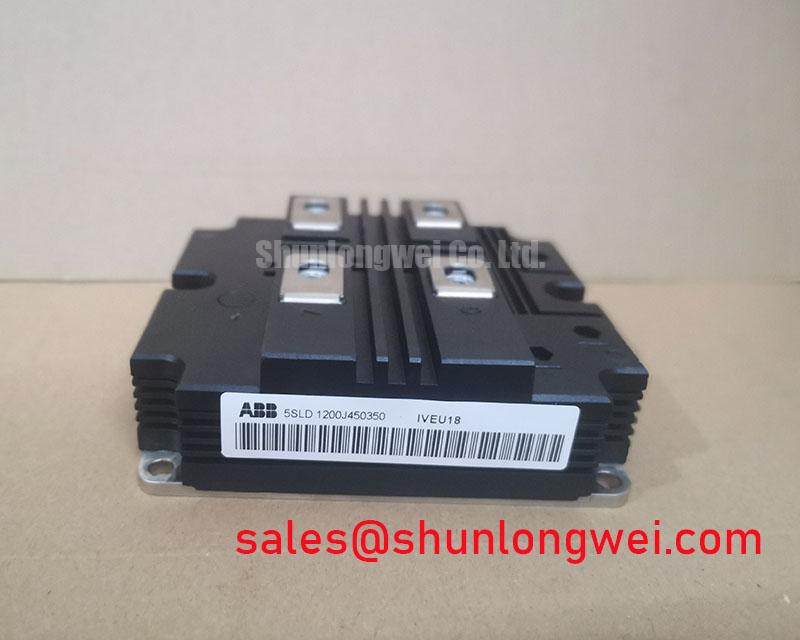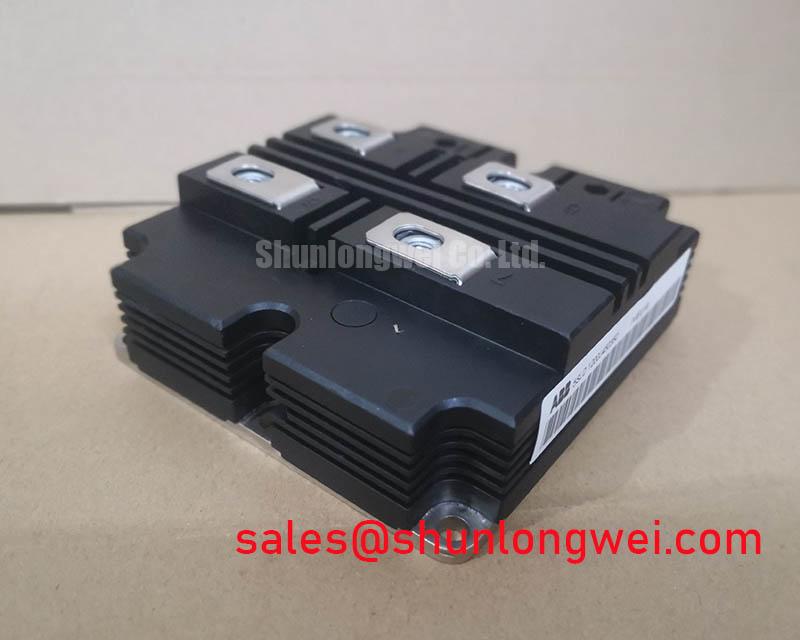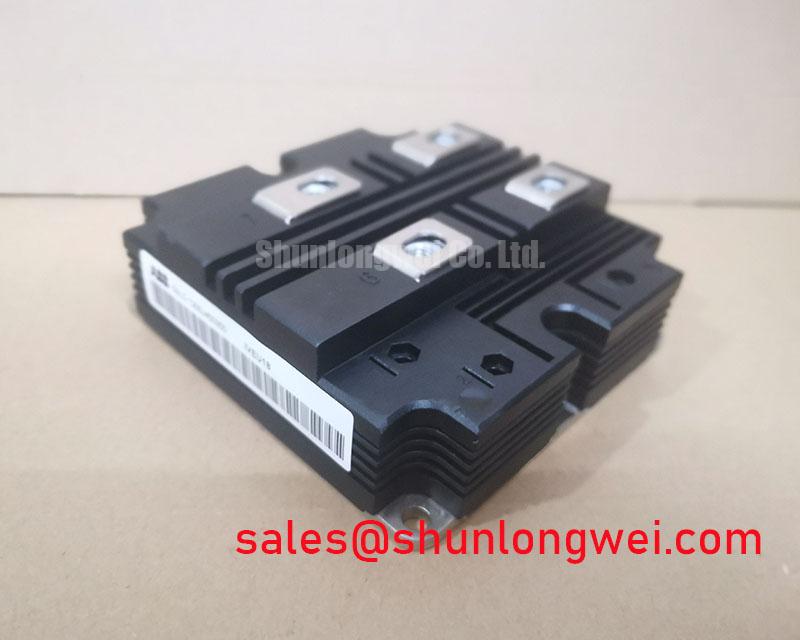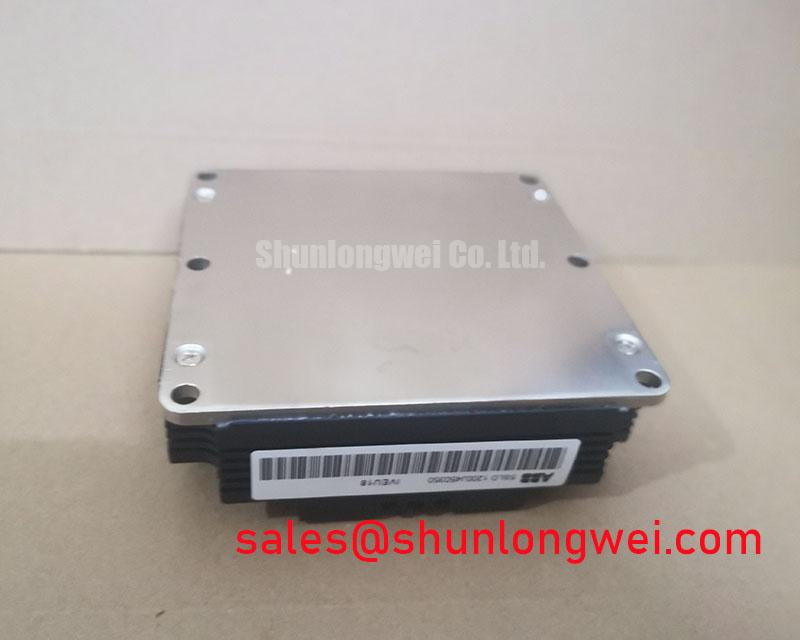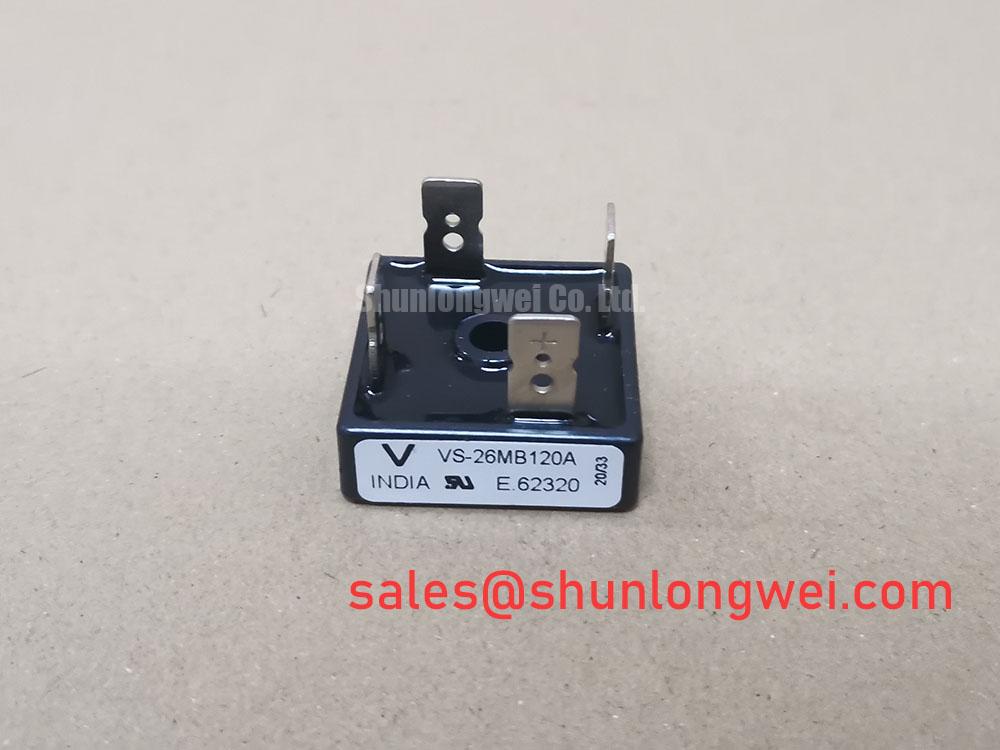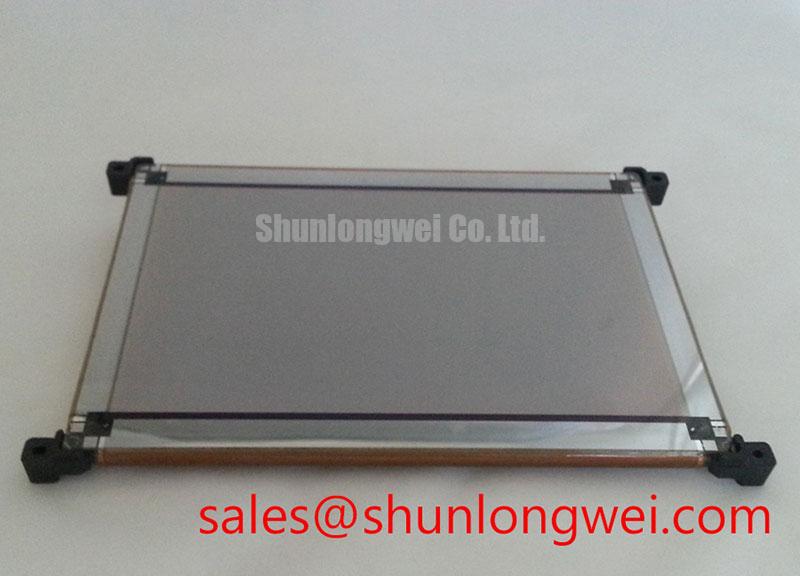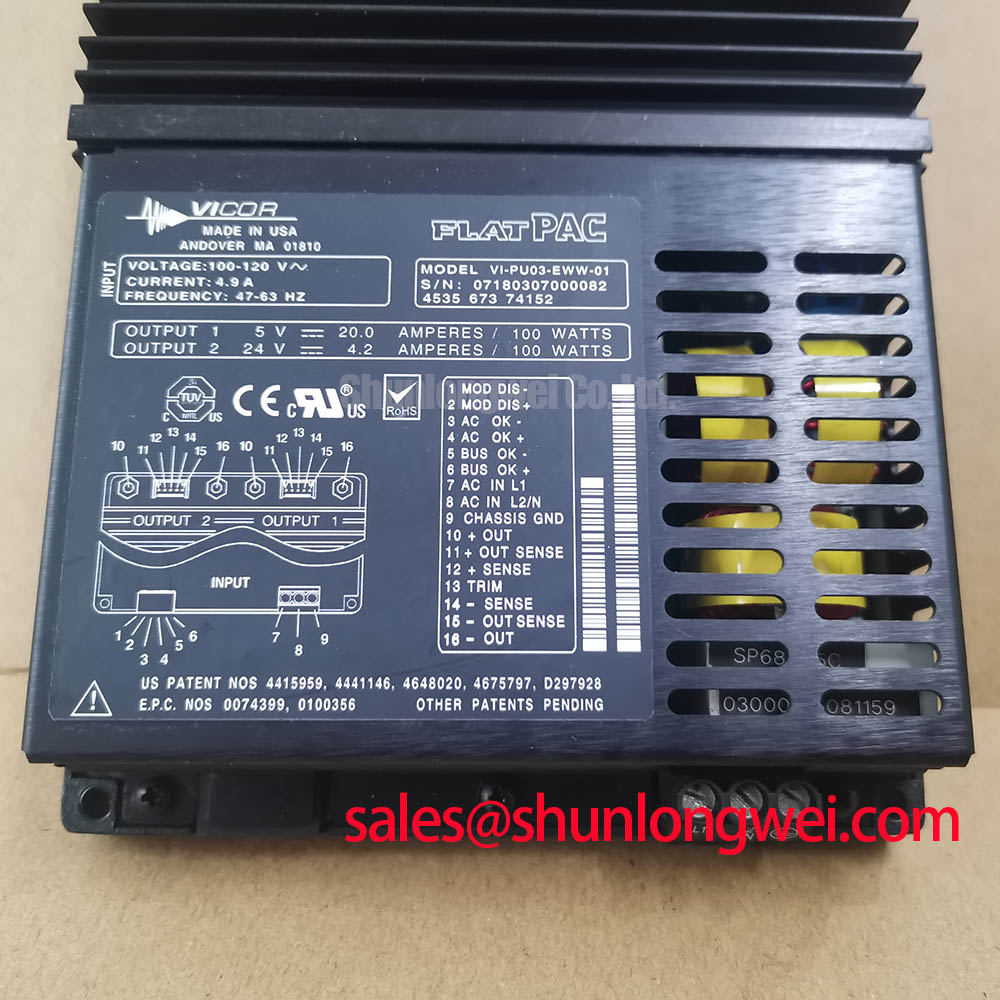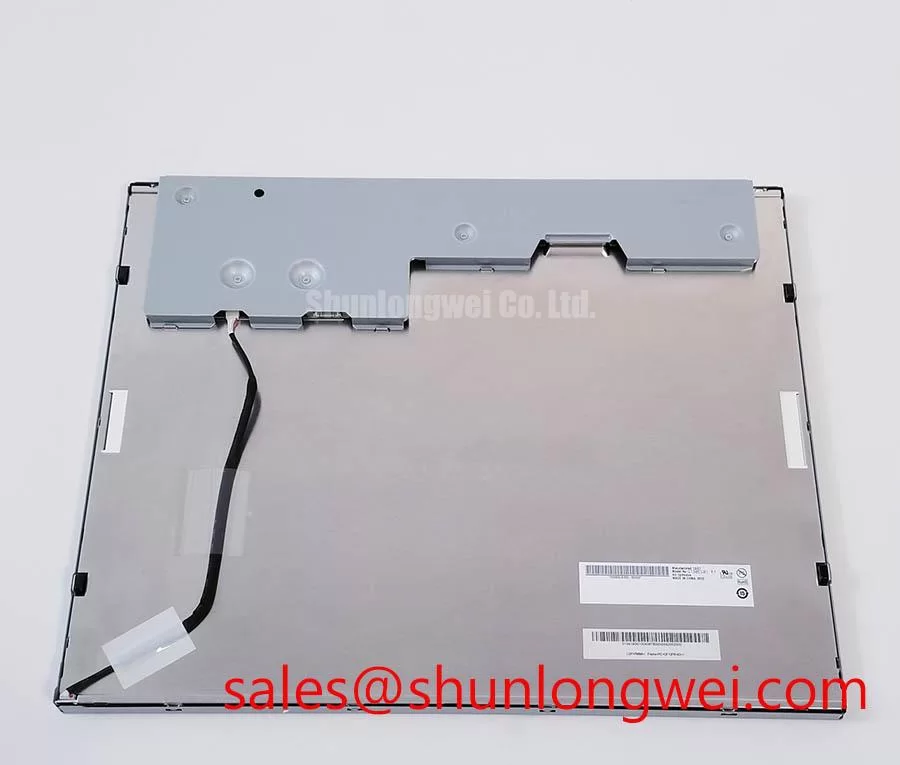5SLD 1200J450350: 4500V HiPak Diode Module for Reliability
Introduction & Key Highlights
Engineered for superior reliability in demanding high-power systems, the Hitachi Energy 5SLD 1200J450350 HiPak diode module leverages an advanced thermal design for long-term operational stability. Its core specifications are tailored for high-voltage rectification where performance cannot be compromised. How does its construction enhance system longevity? The module's AlSiC base-plate and AlN substrate are foundational to minimizing thermal stress and material fatigue, directly contributing to an extended operational life under rigorous power cycling conditions.
- Top Specs: 4500 V | 2x 1200 A | Rth(j-c) 0.019 K/W
- Key Benefits: Exceptional power cycling capability. Superior heat dissipation.
Intra-Series Comparison & Positioning
Positioning for Peak Reliability Within the Product Family
Within the extensive HiPak portfolio, the 5SLD 1200J450350 carves out a specific niche for high-voltage, high-current rectification stages. While other modules may focus on ultra-fast switching characteristics for inverter applications, this device is optimized for scenarios where raw electrical robustness and thermal endurance are the most critical design criteria. Its architecture prioritizes long-term stability and the ability to withstand significant thermal and electrical stress, making it the component of choice for the input side of multi-megawatt power conversion systems that demand maximum uptime.
FAQ
Technical Inquiries on the 5SLD 1200J450350
What makes the AlSiC base-plate in the 5SLD 1200J450350 superior for reliability?
The Aluminum Silicon Carbide (AlSiC) base-plate has a coefficient of thermal expansion (CTE) that is very closely matched to the semiconductor chips. This minimizes mechanical stress on the device during temperature fluctuations (power cycles), which is a primary failure mechanism in conventional power modules, thereby enhancing long-term reliability.
What is the maximum junction temperature (Tvj max) for this module?
The module has a maximum junction temperature rating of 150 °C, with a recommended continuous operating junction temperature (Tvj op) up to 125 °C. This provides a substantial thermal margin for designs in challenging industrial environments.
What are the recommended mounting torque specifications to ensure optimal thermal contact?
For secure and thermally efficient installation, the datasheet specifies a mounting torque of 4 to 6 Nm for the M6 base-plate screws and 8 to 10 Nm for the M8 main terminal screws. Adhering to these values is critical for achieving the specified low thermal resistance.
Can this diode module be used in parallel for higher current applications?
Yes, power semiconductor modules like this can often be paralleled. However, proper implementation requires careful consideration of symmetrical busbar design to ensure current sharing, as well as gate drive signal integrity if used alongside switching devices. A detailed review of the manufacturer's application notes on paralleling is essential for reliable operation.
Application Scenarios & Value
Deployments Demanding Unfailing Rectification
The 5SLD 1200J450350 is engineered for applications where operational continuity is paramount and maintenance opportunities are scarce. Its robust thermal and mechanical design ensures stable performance in the front-end rectifier stages of the most demanding power systems. For multi-megawatt systems operating on >3.3kV lines, its 4500V rating and 0.019 K/W Rth(j-c) make it a definitive choice for front-end rectification.
- Medium-Voltage Drives (MVDs): Provides the reliable DC rail necessary for controlling large motors in mining, marine propulsion, and industrial processing plants.
- Grid Infrastructure: Serves as a critical component in HVDC Lite, STATCOM, and other FACTS devices that require high-voltage power conversion to maintain grid stability.
- Traction Converters: Its high power cycling capability makes it suitable for the demanding, variable loads found in railway and heavy-duty electric vehicle propulsion systems.
- Industrial Power Supplies: Ideal for large-scale induction heating, welding, and metal processing applications that rely on a stable, high-current DC source.
Success Stories / Deployment Snippets
Field-Proven Performance in High-Stress Environments
While specific end-customer deployments are confidential, a typical application profile for the 5SLD 1200J450350 involves its integration into the input rectifier of a wind turbine converter. In this role, the module's ability to handle fluctuating power generation while efficiently managing thermal loads is critical. Its construction ensures tens of thousands of power cycles without degradation, a key requirement for renewable energy systems designed for a 20+ year service life in remote and often harsh environmental conditions, thereby maximizing energy production and minimizing costly service interventions.
Key Parameter Overview
Core Specifications for Thermal and Electrical Stability
The technical specifications of the 5SLD 1200J450350 are centered on delivering robust performance in high-power applications. Below are the cornerstone parameters that system designers should evaluate.
| Parameter | Value |
|---|---|
| Repetitive Peak Reverse Voltage (VRRM) | 4500 V |
| DC Forward Current (IF) | 2 x 1200 A |
| Thermal Resistance, Junction-to-Case (Rth(j-c)) | 0.019 K/W per Diode |
| Isolation Voltage (Visol) | 10200 V (AC, 1 min) |
| Operating Junction Temperature (Tvj op) | -50 to 125 °C |
Interpreting Key Values:
- Thermal Resistance (Rth(j-c)): The exceptionally low thermal resistance of 0.019 K/W is a standout feature. Think of thermal resistance as the bottleneck in a pipe restricting flow; a lower value signifies a wider pipe, allowing waste heat to escape the semiconductor junction more efficiently. This leads directly to lower operating temperatures, higher system reliability, and potentially smaller heatsink requirements. For an in-depth guide, explore why thermal performance is critical.
- Isolation Voltage (Visol): At 10.2 kV, the isolation voltage provides a very high degree of safety and electrical separation between the power circuit and the grounded heatsink. This substantial safety margin is essential in medium-voltage systems, ensuring system integrity and protecting personnel and control electronics from high potential faults.
For a complete list of specifications, please refer to the official product datasheet.
Technical Deep Dive
Anatomy of a High-Reliability Diode: A Closer Look
The superior reliability of the 5SLD 1200J450350 is not accidental; it is a result of deliberate materials science and packaging engineering. The foundation of its thermal performance lies in its Aluminum Nitride (AlN) direct bonded copper (DBC) substrate. AlN offers significantly higher thermal conductivity compared to conventional alumina (Al2O3), providing a more effective pathway for heat to move from the diode chip to the base-plate. What is the key to its mechanical endurance? The use of an Aluminum Silicon Carbide (AlSiC) base-plate, which has a CTE that closely mimics that of the silicon, drastically reduces thermomechanical stress during operation.
Industry Insights & Strategic Advantage
Strategic Advantages in an Era of Electrification
As industries from transportation to energy generation push towards higher levels of electrification, the demand for power components that offer both high voltage capability and uncompromising reliability is accelerating. The 5SLD 1200J450350 directly supports this transition. By providing a rectifier module that reduces the likelihood of thermal failure and extends operational life, it enables the development of more robust and cost-effective systems. For system architects, choosing a component like this is a strategic move to lower the total cost of ownership (TCO) by minimizing downtime and simplifying thermal management, which are critical factors in large-scale infrastructure projects. This aligns with long-term goals of enhancing grid stability and enabling sustainable industrial automation.
Design & Integration Support
Specifying the 5SLD 1200J450350 is a strategic step toward building next-generation power systems that are not only powerful but also exceptionally durable. Its architecture is forward-looking, addressing the increasing industry demands for greater power density, improved operational efficiency, and extended service life. By building a foundation on components engineered for longevity, designers can deliver solutions that offer a distinct competitive advantage and align with the long-term trends of grid modernization and industrial sustainability. For systems requiring a complementary switching device, the 5SNA1200G450300 IGBT module is specified as a compatible component in the datasheet, enabling a fully qualified high-power converter design. A thorough analysis of device specifications is crucial, a process detailed in our guide to decoding IGBT module datasheets.

